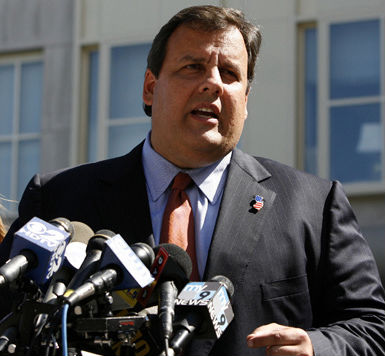
Leo Kolivakis is a blogger, trader and independent senior pension and investment analyst. This post was originally published at Pension Pulse.
Gretchen Morgenson of the New York Times reports, When Private Equity Firms Give Retirees the Short End:
Who comes first, the investors or the person who manages their money?
That question is crucial for any investor. But it poses a special challenge for retired firefighters, police officers, teachers and other employees who may not know that their retirement money is being held in private equity funds.
These are opaque and costly investment vehicles that borrow money to buy companies and sell them, ideally, for a profit. The secrecy under which this $3.5 trillion industry operates has essentially required millions of people whose pensions are invested in these funds to simply trust that they are being treated fairly.
Yet the funds impose fees under terms that create conflicts of interest between investors and general partners who run private equity firms. A little-known practice involves discounts that the firms obtain from lawyers and auditors but do not always share fully with investors. A dive into regulatory filings over the last month revealed that 12 private equity firms said they had actual conflicts of interest in connection with such discounts, while 29 more described potential conflicts. Altogether, the 41 firms oversee almost $600 billion in client assets, documents show.
The disclosures appear in documents the firms filed with the Securities and Exchange Commission as registered investment advisers. For example, Carlyle Investment Management, the $113 billion firm led by David M. Rubenstein, states that in certain circumstances, lawyers, auditors and other vendors charge Carlyle rates that are better than those charged to its investors. As a result, Carlyle receives “more favorable rates or arrangements than those payable by advisory clients or such portfolio companies,” the filing said.
Carlyle declined to comment.
The implications of such arrangements seem troubling: Wealthy private equity funds receive discounts on legal, accounting and other outside work while pension fund investors, like retired bus drivers, librarians and teachers, pay full freight or, in some cases, a premium.
These discounts — and the potential and actual conflicts associated with them — have drawn scrutiny from the S.E.C. The Blackstone Group, the private equity giant run by Stephen A. Schwarzman, said in a filing last month that the S.E.C. was looking at the firm’s practices “relating to the application of disparate vendor discounts to Blackstone and to our funds.”
Although Blackstone said it had changed these practices in 2011, documents it filed in March as a registered investment adviser note that its funds or portfolio companies — both primarily owned by investors — may still pay more in service fees than Blackstone itself.
“Advisers and service providers, or their affiliates, often charge different rates or have different arrangements for specific types of services,” the filing states. “Therefore, based on the types of services used by the funds and portfolio companies as compared to Blackstone and its affiliates and the terms of such services, BMP L.L.C. or its affiliates may benefit to a greater degree from such vendor arrangements than the funds or such portfolio companies.”
A Blackstone spokesman declined to comment further on the filing.
The S.E.C. declined to comment about the private equity firms’ fee practices. But in a speech last month, Marc Wyatt, acting director of the S.E.C.’s office of compliance inspections and examinations, told a private equity industry group, “We can expect additional enforcement recommendations involving undisclosed and misallocated fees and expenses as well as conflicts of interest.”
Private equity firms oversee the assets of endowments, wealthy individuals and pension funds — which indirectly expose huge numbers of unsophisticated people to them. The firms typically charge the investors 1.5 to 2 percent of assets annually, as well as 20 percent of any gains their portfolio companies generate. The firms usually require that the investments remain in the funds for at least five years.
Returns from private equity funds, once strong investment alternatives, have on average trailed those of the broad stock indexes over the last five years.
As returns diminished, investors focused on the sizable private equity fees. In addition to hefty management fees, they include charges for services like advice on mergers and acquisitions for companies in fund portfolios. Many investors have demanded that the firms reimburse them for a portion of such charges.
Regulators have identified certain fees as problematic. One example is the so-called monitoring fee, which investors pay to private equity firms, ostensibly for overseeing portfolio companies in the funds.
Often, though, the firms charged investors for the monitoring of companies no longer in fund portfolios. After the S.E.C. highlighted this practice last year, some firms, like Blackstone, stopped doing it.
According to Preqin, a data research firm, public pension funds’ investments in private equity totaled $321 billion in 2015, up from $248 billion in 2011. Some big pensions are throttling back, though. On Monday, the $300 billion California Public Employees’ Retirement System announced that it was reducing its private equity managers to 30, from 98, in a move to pare portfolio costs.
Calpers’s decision follows a series of disclosures that have emerged since the Dodd-Frank law in 2010 required private equity firms with more than $150 million in assets under management to register as investment advisers and make public filings about their operations.
In these filings, private equity firms delineate possible or realized conflicts posed by variations in service fees charged by outside law firms and others.
Consider a filing by Apollo Global Management, the private equity behemoth overseen by Leon Black. It states that Apollo and its funds receive discounts on plain vanilla legal work such as employment contracts and regulatory filings. Apollo and its investors also receive discounts, its filings show, on charges known as broken-deal fees, which arise when a proposed acquisition or sale of a portfolio company is not completed.
No discounts are given on investment transactions, including those charged to investor-owned funds managed by Apollo, however. In fact, Apollo says that for these transactions, outside service providers often receive a premium beyond the level of customary rates.
“Legal services rendered for investment transactions,” the filing states, “are typically charged to the Apollo Private Equity Managers, their affiliates and clients on a ‘full freight’ basis or at a premium.” Because investment transactions typically occur in investor-owned funds, they end up paying the bulk of the premium prices.
Apollo’s spokesman, Charles V. Zehren, said in a statement: “Apollo has long been a leader in implementing best practices relating to fee arrangements with service providers. The fee and discount structures that we have negotiated for Apollo are made available to our fund clients and to all portfolio companies that wish to participate.”
But J. J. Jelincic, a member of the Calpers board, has criticized the Apollo arrangement: Making investors pay higher prices, he says, allows the firm to reduce its own costs.
“It puts the lie to the fact that we are partners with the private equity firms,” Mr. Jelincic said. “We are simply a source of income to the general partners; we are not partners.”
Private equity investors have not typically been informed of the vendor discount arrangements or of the total amount of money involved. Several members of Calpers’s board and staff learned of the Apollo practice only recently, Mr. Jelincic said. They received a presentation about it from Michael Flaherman, a former chairman of the investment committee of the Calpers board who is conducting research into private equity as a fellow at the Edmond J. Safra Center for Ethics at Harvard University.
Mr. Flaherman declined to comment on the discussions.
Joe DeAnda, a Calpers spokesman, said in a statement: “Calpers has long been a leader in advocating for fee economies and transparency, including in private equity. We have been actively engaging with some of our private equity partners to help improve the disclosure and data available, and have been closely monitoring the regulatory announcements and attention around this subject.”
First Reserve Management, a $17 billion private equity firm with offices in Houston, London and Greenwich, Conn., is another whose filings indicate that outside vendors provide it with discounts that may benefit the firm more than its investors.
A First Reserve document states that “advisers and service providers, or their affiliates, may charge different rates or have different arrangements for services provided to First Reserve and its affiliates as compared to services provided to the First Reserve Funds and their portfolio companies.” That could hurt investors.
The document says it could result “in more favorable rates or arrangements than those payable by the First Reserve Funds or such portfolio companies.”
First Reserve did not respond to an email seeking comment.
In their S.E.C. filings, 12 of 41 firms with actual or potential conflicts of interest framed their discount arrangements as actual ones. For example, Freeman Spogli & Company a $4 billion private equity fund, said, “There is often a conflict of interest between the firm, on the one hand, and the funds and portfolio companies, on the other hand.”
The five New York City pension funds overseen by Scott M. Stringer, the city comptroller, invest with Apollo, Blackstone, Carlyle, First Reserve and Freeman Spogli. Asked how he views the potential conflicts relating to vendor discounts, Mr. Stringer said: “The S.E.C. has raised serious concerns, and we support them taking a hard look at this issue. It’s clear that we still don’t have enough transparency from our private equity partners.”
So far, few pension funds or other investors have complained publicly about the discounts.
The South Carolina Retirement System Investment Commission, with $30 billion under management, uses private equity funds heavily and invests with Apollo. Asked about the firm’s practice of letting investors pay a premium for some outside work, Michael Hitchcock, the commission’s executive director, provided a statement.
“We will continue to work with our managers to reduce the overall fees we pay,” Mr. Hitchcock said, “and will place a particular emphasis on availing ourselves of the opportunity for fee savings due to our managers’ relationships with third-party service providers.”
In some respects, these issues are as old as Wall Street, where the interests of financiers and their clients have not always been aligned. A trenchant book on the topic first published in 1940 remains a classic. It is by Fred Schwed Jr. and carries the plaintive title “Where Are the Customers’ Yachts?”
Today, it may be time to ask: Where are the customers’ discounts?
Indeed, where are the customers’ discounts and yachts? I’ve been warning my readers for a long time, stick a fork in private equity, it’s done! I’m increasingly concerned about how the liquidity time bomb will impact the industry and agree with Ron Mock, president and CEO of the Ontario Teachers’ Pension Plan, things are getting very frothy in private equity and other alternatives where valuations are being bid up to nose-bleeding levels.
The article above highlights another problem the industry is confronting, namely, increased regulatory and investor scrutiny over the fees being charged and whether clients enjoy the rebates large private equity firms enjoy with third-party service providers like auditors and lawyers.
In her latest assault on the private equity industry, Yves Smith of the naked capitalism blog comments, Carlyle, Apollo, Blackstone Cheat Private Equity Investors with Legal Fee Ruse,rips into the practice and ask whether pension fund fiduciaries are doing their job:
It appears that this story got to Morgenson by virtue of a former CalPERS board member turned private equity researcher presenting evidence of this practice to some CalPERS board members, and potentially to other pension funds as well. Board member JJ Jelincic, who has almost become a regular here by virtue of taking the rare role at CalPERS of digging into questionable private equity practices, gave the only sensible reaction of any of the investors quoted in the Times story:
“It puts the lie to the fact that we are partners with the private equity firms,” Mr. Jelincic said. “We are simply a source of income to the general partners; we are not partners.
By contrast, consider the misdirection in the official CalPERS comment:
Joe DeAnda, a Calpers spokesman, said in a statement: “Calpers has long been a leader in advocating for fee economies and transparency, including in private equity. We have been actively engaging with some of our private equity partners to help improve the disclosure and data available, and have been closely monitoring the regulatory announcements and attention around this subject.”
First, DeAnda exhibits precisely the sort of cognitive capture that Jelincic highlighted, that of thinking that someone who sees (and treats) you as a meal ticket should be thought of as a partner. But confusing legal structures with the actual economic relationship is pervasive among investors. Second, the fee issue is not a transparency problem. It’s an abuse of fiduciary duty. And it’s not remedied by ex post facto disclosure in Dodd Frank mandated SEC filings after the investment was made (Form ADV).
The New York City Comptroller, Scott Stringer, gives an even more lame response:
Asked how he views the potential conflicts relating to vendor discounts, Mr. Stringer said: “The S.E.C. has raised serious concerns, and we support them taking a hard look at this issue. It’s clear that we still don’t have enough transparency from our private equity partners.”
“We support the SEC taking a hard look.” How about doing your job for city retirees and asking some questions yourself? Aren’t you the one ultimately responsible for the handling of these funds? Not only does he want the toothless SEC to do his work for him, but he makes it clear he’s not interested in rocking the boat. All he wants is a “hard look”. It looks like Stringer is an ambitious enough pol that he does not want to alienate future campaign donors. And again, we have the “transparency” dodge and the mischaracterization of firms as partners when they are actually taking advantage of his dereliction of duty.
Another ugly bit here is that the law firms are complicit in this behavior, and many of them work both sides of the street. For instance, we wrote early on about how Boston’s blue-chippiest firm, Ropes & Grey, using it to warn the candidate we hoped would win the New York City comptroller’s race, Eliot Spitzer, was not only working on every side imaginable of private equity transactions, but was also taking advantage of a loophole in standard conflicts of interest waivers for its partners to take an economic position in deals ahead of and in clear conflict with that of its longest-standing client, Harvard. We didn’t bother addressing this post to Stringer too because it was clear he was too unsophisticated and spineless to take on private equity kingpins. So why aren’t investors at a minimum also asking law firms that represent them, if they also represent private equity firms, what their discount and other billing practices are?
And as readers are seeing, Stringer, who oversees a pension system that is one of the largest private equity investors in the US, typifies the complacency that makes pension funds such easy prey for private equity firms. It’s time that fund beneficiaries, meaning retirees, as well as taxpayers who are ultimately on the hook, start raising hell with state and local politicians who have a role in pension fund supervision.
Yves, aka Susan Webber, raises good points but she’s on a crusade against the private equity industry and adds too much conspiratorial sauce to her comments. Also, she discloses at the end of her comment “We have made a private equity whistleblower filing to the SEC.”
In other words, she’s looking to profit off her “investigative work” which is fine but it makes her comments far less impartial than she claims them to be.
As far as CalPERS, it recently made a wise decision to chop external managers in half, keeping the allocations to private equity, real estate and other illiquid alternatives, but reducing the number of funds. This follows a move last September where it nuked its hedge fund program.
As part of this shakeup, CalPERS just announced it topped up the war chest of Blackstone Group ‘s Tactical Opportunities team with another $500 million, deepening its multibillion-dollar footprint with the New York firm:
The nation’s largest public pension fund has been laying the groundwork to pledge larger checks to a handful of firms while cutting its total number of managers. In concentrating large amounts of capital with a few managers, limited partners are funneling more money to the biggest alternatives firms equipped to invest across a range of strategies.
Calpers’s latest commitment to Blackstone will be managed in an account customized for the $300 billion-plus pension fund, giving it a bigger voice in shaping the portfolio. This will bring Calpers’s pledges to Blackstone’s Tactical Opportunities platform to about $1.4 billion since 2012, a pension fund spokesman said. Calpers disclosed the pledge this week in an investment report.
This latest mandate from Calpers is a coup for Blackstone as the buyout shop-turned-alternatives firm looks to lock in more captive capital. Calpers’s latest pledge gives the Tactical Opportunities group, which cycles between various strategies and styles, extra firepower to bid for fast-moving deals.
Since the late 1990s, Calpers had committed more than $3.5 billion to active Blackstone partnerships as of Sept. 30.
The Wall Street Journal reported earlier this week that Calpers plans to slash the number of firms that manage its money to reduce costs and ease staffing burdens , which would potentially free up more capital for its key relationships. A spokesman said the pension fund hasn’t officially embarked on the cuts yet.
Blackstone has been successful in winning hefty mandates from public investors because it has cultivated the image that it can deliver returns even as it gets bigger, challenging the notion that returns suffer as a firm’s asset base grows and it is pressured to put more dry powder to work. This has helped shape the view that private equity can be a scalable business, said an investment official at another public fund with a sizable Blackstone exposure.
For more on how and where institutional investors are investing their money, check out LBO Wire.
This too is a good move if CalPERS bargained hard on fees and decides to finally scrutinize all costs these large alternatives firms are charging it. I’ve covered Blackstone’s David Blitzer in a previous comment of mine on the alternatives blitz bonanza, and think very highly of him and his team.
(In a separate move, Blackstone, which is the biggest real estate private equity firm, hired Jonathan Pollack from Deutsche Bank AG to be chief investment officer of its property-debt unit, which oversees almost $10 billion of investor capital.)
Of course, one problem with CalPERS strategy is it will give private equity “kingpins” more money and more clout. Also, the bifurcation of the private equity and hedge fund industry worries me because it’s the largest funds that keep garnering all the assets, making them less prone to focus on performance.
This is why I applauded CPPIB’s recent deal with GE, because it gives them immediate exposure to the mid-market space and they won’t be paying any fees to any private equity fund. The deal has risks but over the very long run these risks will dissipate and it has better alignment of interest with all their stakeholders.
As always, feel free to reach out to me if you have any comments on this topic (LKolivakis@gmail.com). Private equity is an important asset class but we need to remove all the secrecy that surrounds fees and costs. Period.
Photo by Timothy Sulllivan via Flickr CC License










